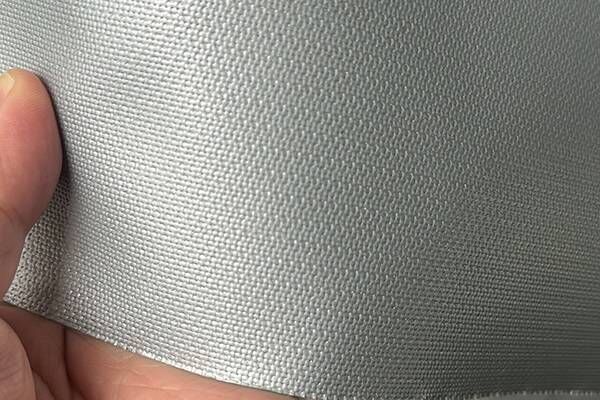Exploring the Versatility of Silicone Coated Fiberglass Fabric

In the realm of industrial materials, few substances offer the versatility and reliability of fiberglass fabric. Its robustness and heat-resistant properties have made it indispensable in various applications, ranging from insulation to reinforcement. However, when enhanced with a silicone coating, its capabilities are elevated to new heights. This article delves into the world of silicone coated fiberglass fabric, examining its properties, applications, and benefits compared to alternatives like aluminum foil fiberglass fabric.
Understanding Silicone Coated Fiberglass Fabric
Silicone coated fiberglass fabric combines the strength and durability of fiberglass with the heat resistance and flexibility of silicone. The process involves applying a layer of silicone rubber onto a fiberglass substrate, creating a material that excels in demanding environments. This fusion of materials results in a fabric that is highly resistant to extreme temperatures, chemicals, and abrasion, making it suitable for a wide range of industrial applications.
Comparing Silicone Coated Fiberglass Fabric with Aluminum Foil Fiberglass Fabric
While both silicone coated fiberglass fabric and aluminum foil fiberglass fabric offer heat resistance, each has distinct advantages in specific applications. Aluminum foil fiberglass fabric provides excellent thermal insulation and reflects heat effectively, making it ideal for applications where heat retention is crucial. However, its rigidity can limit its flexibility and adaptability in certain situations.
On the other hand, silicone coated fiberglass fabric offers similar heat resistance while providing greater flexibility and durability. The silicone coating enhances the fabric's resistance to abrasion, moisture, and chemicals, making it more versatile in demanding environments. Its pliability allows for easier installation around complex shapes and structures, expanding its utility across various industries.
Applications of Silicone Coated Fiberglass Fabric
1. Heat Insulation: Silicone coated fiberglass fabric is commonly used in thermal insulation applications where resistance to high temperatures is essential. It serves as an effective barrier against radiant heat, making it suitable for insulation blankets, protective curtains, and thermal barriers in industrial settings.
2. Fireproofing: Due to its flame-retardant properties, silicone coated fiberglass fabric is employed in fireproofing applications. It serves as a protective layer in fire curtains, welding blankets, and safety barriers, preventing the spread of flames and reducing the risk of fire-related accidents.
3. Release Liners: The non-stick surface of silicone coated fiberglass fabric makes it ideal for use as release liners in manufacturing processes. It facilitates the easy removal of adhesive-backed materials, composite components, and molded products, reducing waste and improving production efficiency.
4. Electrical Insulation: In electrical applications, silicone coated fiberglass fabric acts as an insulating barrier, protecting components from heat and electrical currents. It is used in the manufacturing of insulation sleeves, cable wraps, and electrical enclosures, ensuring safety and reliability in electrical systems.
5. Weatherproofing: The weather-resistant properties of silicone coated fiberglass fabric make it suitable for outdoor applications requiring protection against moisture, UV radiation, and harsh weather conditions. It is utilized in the construction of awnings, canopies, and outdoor covers, providing durable and long-lasting protection.
Benefits of Silicone Coated Fiberglass Fabric
1. High Temperature Resistance: Silicone coated fiberglass fabric can withstand temperatures ranging from -50°C to 260°C (-58°F to 500°F), making it suitable for use in extreme heat environments without degradation.
2. Chemical Resistance: The silicone coating provides excellent resistance to oils, chemicals, and solvents, ensuring durability and longevity in corrosive environments.
3. Flexibility and Conformability: Unlike rigid materials such as aluminum foil fiberglass fabric, silicone coated fiberglass fabric is flexible and conforms easily to complex shapes and surfaces, enhancing its versatility and usability.
4. Durable and Long-lasting: With its strong fiberglass base and resilient silicone coating, this fabric exhibits exceptional durability and resistance to wear, tear, and abrasion, resulting in a longer service life and reduced maintenance costs.
5. Non-Stick Surface: The non-stick properties of silicone coated fiberglass fabric prevent adhesion of sticky substances, facilitating easy cleanup and maintenance in various applications.
Conclusion
Silicone coated fiberglass fabric represents a remarkable fusion of strength, flexibility, and heat resistance, making it indispensable across diverse industries. While alternatives like aluminum foil fiberglass fabric offer specific advantages, the unique properties of silicone coated fiberglass fabric position it as a superior choice in many applications. Whether insulating against extreme temperatures, safeguarding against fire hazards, or enhancing productivity in manufacturing processes, this versatile material continues to play a pivotal role in shaping the future of industrial innovation.

